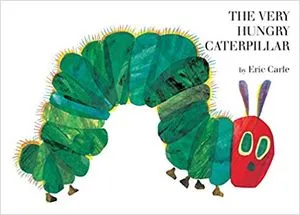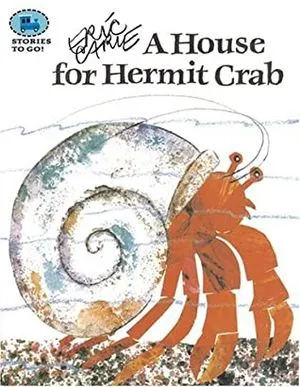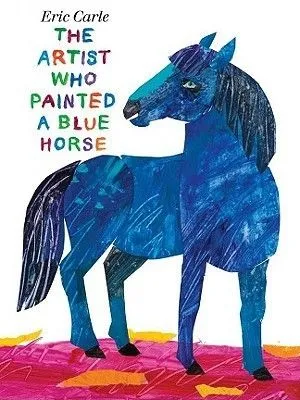
The 10 Best Eric Carle Books
Choosing the ten best Eric Carle books among the more than 70 stories he wrote and illustrated throughout his career is no easy task. So many of us loved his picture books as children and continue reading them to the young people in our lives now. Through his artwork, he created a unique visual style using collages of his hand painted papers. His illustrations were vibrant, cheerful, and brightly colored. Children (and adults) love looking at the beautiful images he created. But he also had a genius understanding of how to write for children. With sparse words, repetition, and a focus on processes and cycles, the stories he wrote are beloved by millions of people.
Over 152 million of his books have been sold all over the world, and his words have been translated into more than 66 languages. With his wife, he founded The Eric Carle Museum of Picture Book Art in Amherst, Massachusetts. Aside from loving his books throughout my life, in college the museum became one of my favorite places to spend time. Like so many other fans, I wanted to celebrate his life and his books when I learned of his recent passing.
From hungry caterpillars to lonely hermit crabs to artists powerfully creating the worlds around them, here are the ten best Eric Carle books.
The Best Eric Carle Books
The Very Hungry Caterpillar
I have to start with this iconic picture book. According to its publisher, a new copy of The Very Hungry Caterpillar is bought every 30 seconds. It would be impossible to create a list of the best Eric Carle books and forget to include this classic. The story begins with a caterpillar hatching from an egg under the moonlight. Soon, the young larvae is eating his way through many foods before transforming into a butterfly. The bright, color-filled illustrations are certainly a large part of the book’s popularity. It also covers numbers, days of the week, and the life-cycle of a butterfly through the sparse words. Whatever the reason, young readers love this book. I know it’s one I made my mom read over and over and over to me when I was a child.
Brown Bear, Brown Bear, What Do You See?
Another Eric Carle favorite, this is his first book created in collaboration with Bill Martin Jr. Published in 1967, the book helps children associate colors with different animals. The repetition of asking each animal, “what do you see?” also is perfect for reading aloud with preschool aged children. And with the whimsy of a blue horse, a purple cat, and a pink elephant, who wouldn’t be delighted by the illustrations?
The Very Busy Spider
This was my favorite Eric Carle book growing up. I think because I loved running my fingers over the spiderwebs. It tells the story of a focused spider trying to spin her web on a fence post. Animal after animal approach her asking her to play. But the spider refuses to be distracted. The book was designed to be multi-sensory, with both visual and tactile elements. The strands of the web are embossed onto the pages so readers can feel them as well as see them.
A House for Hermit Crab
A hermit crab has outgrown his home and must look for a new shell. When he finds one that fits, it feels too empty and plain. Each month, he finds a new friend to join him on his shell from a sea star to an urchin to a sea anemone. At the end of the year, his shell is feeling too small again. But he doesn’t want to leave behind all his friends. When a smaller hermit crab comes by without a home, he decides to give the smaller crab his beautiful shell. And he finds a bigger shell that fits and begins the process all over again. This story is often used when kids move away. But I think it also has a wonderful message about learning to accept that change is an important part of life and to never be afraid of your own growth.
Papa, Please Get the Moon for Me
This is one of Eric Carle’s lesser known picture books that I love. It explains the phases of the moon, explores parental love and devotion, and plays with the picture book form. One night, a girl looks up at the moon and asks her father to bring it down to her. He whimsically builds a tall ladder to put on top of a tall mountain and reaches the moon. But he must wait until it becomes small enough to bring back down to his daughter. Every night it gets a little smaller, until it is just the right size. The girl loves playing with moon, but one day it disappears. The cycle is complete, when the moon appears back in the sky and begins getting a little bigger each night.
The Artist Who Painted a Blue Horse
This is a more recent book from Eric Carle, so it might be unfamiliar to some of his fans. It celebrates the artistic process by using some of his most iconic animal illustrations. In the story a child proudly proclaims that they are an artist. They then list all of the beautiful images they create. Besides being visually stunning, as all the best Eric Carle books are, this story encourages children to use their own imaginations and creativity to make art.
Draw Me a Star
This picture book is also about honoring the artistic process and a deep cut among Eric Carle’s books. In my opinion, it is his weirdest and most experimental story. It is also the most interesting for me to return to as an adult. Some people find it controversial — there is even an illustration of a naked man and woman inside. The artist begins by being asked to draw a star and then a sun and then a tree. Soon the artist has created the entire world. The last pages also include instructions on how to draw a star yourself. If you haven’t read this one, I suggest finding a copy to look through.
The Mixed-Up Chameleon
With his use of vibrant colors, it makes sense Eric Carle would eventually write a story about a chameleon. The color changing animal spends the story wanting to be like everyone else. He visits the zoo and wishes he could be strong like a polar bear, handsome like a flamingo, and swim like a fish. But when his wishes start coming true, he becomes all mixed up with all the different animal parts on his body. He can no longer catch flies or blend in. So he wishes to be himself. Visually, I think this is one of the wackiest of Eric Carle’s picture books. And it has a beautiful message about loving yourself.
The Tiny Seed
With his beautiful collage illustrations, Eric Carle describes the life cycle of a plant in this picture book. The story describes how the different elements and weather affect the tiny seeds. It can be perilous. They must survive being blown far away by the wind, burnt up by the sun, and frozen by the snow in winter. Some seeds don’t survive. But the ones that do grow into beautiful plants, which face different dangers too. The tiniest seed from the story survives all of this to become a big, red flower. And when autumn comes the cycle begins again with the flower sending its own seeds out into the world.
Mister Seahorse
This book brings us back into the ocean, for a story about Mr. Sea Horse and other male sea creatures who are responsible for watching over and hatching their eggs. The illustrations include special transparent acetate pages that help hide the different fish and sea creatures in their settings. The interactive pop up element is beautiful, along with the ecology lesson about male species who nurture and care for their offspring.
I hope I hit your favorite Eric Carle book on this list. Although with over 70 books, I’m sure I missed a few! There are just too many good ones to fit them all in.
Further Reading
10 Picture Books To Broaden the Very Hungry Caterpillar’s Palate
An Absolutely Serious Analysis of THE VERY HUNGRY CATERPILLAR
20 of the Very Best Children’s Authors: An Unscientific List






















